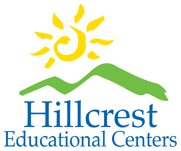TAKING SPACE
Hillcrest Educational Centers, Inc. (HEC) teaches, encourages, and supports students to utilize skills so that they may more successfully negotiate life demands. Preferred individual coping skills are identified proactively by the student, agreed upon by the treatment team, and detailed as a part of the Comprehensive Treatment Plan and/or Safety plan. One supportive intervention that is always available to students to help them learn to successfully self regulate is “taking space,” or taking time away from the rest of the group of students. Taking space is voluntary when it is requested by a student or the student is willing to take space when prompted by staff. Sensory rooms are provided at some facilities as a preferred location of this supportive intervention. The goals of this intervention include:
• To avoid becoming overwhelmed and/or engaging in quick relief behaviors
• To decrease sensory input and/or access sensory modulation tools
• To provide support and/or practice the skills needed to negotiate a situation successfully
• To encourage self-responsibility, success and competency
TIME AWAY
Students are rarely removed from a situation to take space involuntarily. However, due to the severity of the behaviors and the difficulties HEC students demonstrate, it is necessary at times to separate a student from the rest of the group. If a student is removed from a situation, it is for the following purposes only:
• An attempt to prevent the need for physical intervention and/or,
• To maintain the safety of all involved.
Continuous observation by a staff member who will be with the student and immediately available to the student at all times. During school hours, the staff member will be an academic staff.
Time Away Process
Provide expectations
The student is given clear expectations for the out of program time. For example: “Joe, how about you take some time out of program in the lounge and calm yourself. After a few minutes, if you’re calm and in control, we will talk about what happened, and practice some skills to avoid these situations in the future. Until the student is calm and agrees to process the behavior, verbal communication should be kept to a minimum (i.e., periodic check-ins or coaching/reminders of calming strategies).
Establish Calm
Although time out of program should be limited to no more than 30 minutes, there is no set time limit for the student to calm. A student should rejoin program as soon as he or she is calm or safe enough to do so. Staff should use discretion based on circumstances and safety. Generalities may be used such as “a few minutes”, or “just another minute” as a guideline. The student should display patience, and self-control through their verbal interaction (agreeing with you, saying “yes,” “okay,” etc.) and body language (attentive, looking more relaxed, crying stopped, etc.) before moving to skill practices. Students will be provided the time that is needed to regain calm, process and re-enter program.
Staff with the student will communicate with their supervisor the status of the student’s time away. If the time exceeds 30 minutes, the supervisor will alert the Program Director, or designee, who will approve the continuation of the time away.
Skill Practices
A student is ready to process when they are reasonably calm, respectful, and attentive. Processing options include:
Life space interview
• Situational Analysis
• Collaborative Problem Solving
• Skill Coaching exercises
Return to group and implementation
Upon successful completion of Skill Practice exercises the student can return to group. Staff should assist the student to return to the group safely and constructively.
INDIVIDUALIZED PROGRAMMING
Individualized Programming (IP) as defined in this policy replaces all other policies and procedures where students are removed from regular programming, or separated from the other students, as a result of problematic behavior.
Individualized Programming (IP) Process:
- The Program Director, or designee, in consultation with clinical and program departmental staff, determines the need for IP for an individual student.
- If a student’s plan includes restriction from routine programming activities (as detailed below) for 24 hours, an evaluation will be completed by licensed clinician and/or HEC clinical director.
- The Program Director, or designee, and consulting staff, or whenever possible the treatment team, determine the individual IP plan for that student.
- Whenever possible the plan should be created in collaboration with the student.
- Progress on the plan must be reviewed, between the student and staff, a minimum of once per shift.
Individualized Programming (IP) is a set of intervention tools. IP may be implemented in various settings of the program as deemed appropriate by the team and focuses on providing support, safety, and skill building and is specifically designed to avoid the trauma reactivity that can result from punishment, and instead focuses on trauma informed principles.
IP provides programming in a way that maintains the safety of the youth and those around them. The focus of IP is to re-establish safety as quickly as possible in order to return the youth to regular supervision status. IP plans are reviewed daily and may either be continued, modified or discontinued based on whether or not safety has been restored for the youth. Safety is the only measure utilized for readiness to return to regular supervision status/programming.
- The student shall return to program once they have calmed. staff will check in with the student during their time away to assess the student’s readiness to return to the scheduled task. The student will return to the scheduled task once he/she has indicated that he/she feels calm enough to do so.
- IP plans are reviewed daily and may either be continued, modified or discontinued based on whether or not safety has been restored for the youth. Readiness to return to regular supervision status is never measured in terms of time or compliance level. Safety is the only measure utilized.
